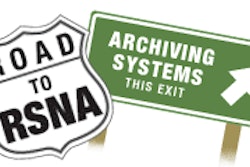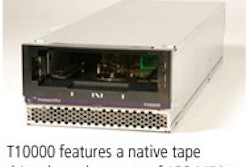Introducing PACS to the pediatric emergency room can be accomplished without affecting the accuracy of radiograph interpretation by emergency physicians, according to research published in Academic Emergency Medicine.
“Digital radiographic study interpretation by pediatric EPs is as accurate as that performed by using conventional radiographs,” wrote researchers from Ste-Justine's Hospital and Montreal Children’s Hospital in Montreal, Canada.
To compare the accuracy of diagnostic interpretation by pediatric emergency physicians before and after the introduction of PACS, the study team retrospectively compared results from September 2001 (when patients were evaluated using only conventional radiography) with September 2002 (when only digital radiography was used) (AEM, February 2006, Vol. 13: 2, pp. 186-190).
The study included data from 1,644 of 1,651 sets of conventional radiographs ordered for the pre-PACS study period, and from 1,430 of 1,431 sets of DR studies for the post-PACS period. The researchers compared the pediatric EP’s diagnostic accuracy between the periods, using the radiologists’ interpretations as the criterion standard.
As determined by the radiologists, there was a 32% prevalence of positive radiological studies in the pre-PACS study period, compared with 28.7% in the post-PACS period. Pediatric emergency physicians produced diagnostic accuracy of 98.1% in the pre-PACS period, compared with 98.5% in the post-PACS period.
Sensitivity was 96.4% in the pre-PACS period, compared with 98.1% post-PACS. The pediatric emergency physicians produced specificity of 98.9% pre-PACS, compared with 98.6% post-PACS.
Negative predictive value was 98.3% pre-PACS and 99.2% post-PACS. Positive predictive value was 97.7% pre-PACS and 96.6% post-PACS.
There was a 1.2% rate of false negatives pre-PACS, compared with 0.6% post-PACS. One false-negative patient for each period required immediate follow-up for a missed diagnosis, according to the researchers.
As might be expected with PACS, the researchers also discovered fewer lost films. Only one film was lost in the post-PACS period, compared with seven during the pre-PACS time frame.
“Along with other expected and observed benefits of immediate availability of present and past films and the flexibility to enhance views, we conclude that a PACS was a positive technological addition to our ED,” the authors wrote.
By Erik L. Ridley
AuntMinnie.com staff writer
February 20, 2006
Related Reading
New efforts urged to ‘save’ pediatric radiology, June 14, 2005
Flexibility crucial in bringing PACS to the ED, OR, and ICU, June 7, 2005
Copyright © 2006 AuntMinnie.com



















